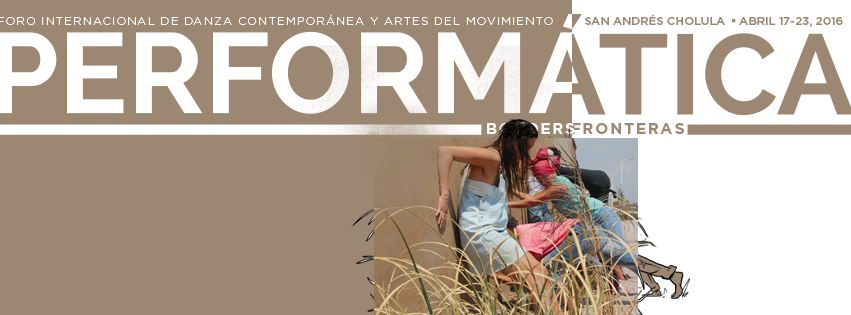
|
2012 Creation Intensives
Creation Intensives will occur daily, Monday through Friday from 5-7 p.m. You will not need to register for these, however there will be an audition process that will take place on April 9 at 1:00 pm in the Agora dance studio at UDLAP. Unfortunately not everybody will be able to participate in this aspect of the forum, the decision will be taken by each choreographer as needed. Diana CrumIf I tell myself I have enough time, then I can be with you
Lou SturmINSTANT ONLY
Live scenic creations. The idea is to have a working team and go different places to explore and create right there with the material and the people that are available. Goals: Presence and spontaneity in instant composition. Methodology: Warm-up using the senses. Alignment outside the dance studio. Rachel Thorne GermondGroup WorkCollaborative choreography for a group of dancers, with phrase development by the dancers and structured by Rachel Thorne. Methodology: investigation of the idea of "movement phrase" as material for a dance, also of text as inspiration for movement material. Tania GalindoWeave: Hybridization and Mixed Races.Finding one-self in this body parting from a mixed and contemporary reality that looks within for a starting point for the study and practice of being in a workshop that weaves realities that everybody faces today: identity acceptance, hatred, poverty, strength, love, to name a few, IN LAKECH, you are me and I am you. Rose Pasquarello, Belle Baggs/inFluxDanceMoving the Future; Creating dance and social justice. Project in collaboration with community members of San Pedro CholulaThe world is changing. There is a shift in consciousness happening across cultures that brings into question our beliefs, our passions, and our art. We are interested in conducting a collaborative creative project that explores the idea of dance as social change. Dance and movement have a greater power than we realize. There is much to be learned from a kinesthetic place. Bodily intelligence is just as important as verbal and logical intelligence. We as humans experience and embody our own history and future. Therefore, can we use this physicality to influence our larger culture? Can we change our own future through embodiment? We are curious about the process of people coming together to share in creating movement with a purpose, while holding the focus on the individual and the group. Simultaneously we are fascinated with how Idealogical ‘Movements’ affect our culture and how movements (physicality in the body) can affect our culture and/or is effected by our culture. There needs to be more confidence in the idea that dance and movement can provide an outlet for social change i.e. movement initiating ‘Movements’. Our most recent and daring work, Justice for Some, explores the history of protest, as well as the current climate of protest as it pertains to human rights and politics. In this show, we present both sides of current controversial issues through film, dance, and discussion. Using this as a springboard, we are excited to visit various communities and facilitate a process of discussion, exploration, and creation that inspires awareness locally, nationally, and globally. We are interested in presenting this material to the participants and using it as inspiration to facilitate discussion and create work. Preferred Performance Setting: Site-specific is our preference and it will be decided upon as a group. Based on our ideas mentioned above it feels necessary to present this in a open venue that allows ALL people to witness the final piece. Desired number and type of participants: We can work with any number of participants from 5-50. There is something interesting in an intimate workshop but working with a large mass of collaborators could be important as well. The most important thing is that the participants are highly interested in the influences dance and movement art forms can have on our cultures. We would like to work with collaborators interested in dialogue around important issues of our time. Goals: Our goal is to present the material mentioned above to audiences of diverse backgrounds in diverse venues in attempt to provide a forum for open dialog and honest self-expression. This work does not pose answers, rather it poses questions: What are we fighting for and why? How do we develop compassion and find the patience to listen to those we disagree with? And, How do we instigate change as individuals by standing up for what we believe? For dancers and choreographers, there are even more exciting questions relating to movement: What is the embodiment of protest? How can dance as an art form, contribute to and create social change? How does the movement of our bodies support the social ‘movements’ that we believe in? Has technology disembodied us? How does that relate to creating social change? We want to use all of these ideas to ultimately create a new collaborative site specific performance piece. Methodology: Our process will be comprised of 5 parts: 1. Introduction
|